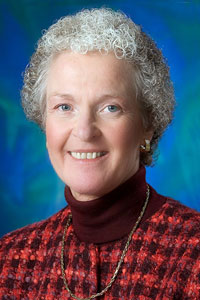 For 17 years (how could it have been that long ago?), public relations researchers — both from the practice and the academy — have gathered annually to share and discuss their efforts and findings at the International Public Relations Research Conference (IPRRC). I’ve been fortunate to have been at 15 of the 17 conferences, from the very first held at the University of Maryland that followed the traditional format of academic conferences — formal presentations of completed research by academics — to the 2014 conference that just concluded held in Miami, a round-robin of brief, informal presentations of research, both completed and ongoing, with the expectation of significant audience discussion and interaction with the researchers.
For 17 years (how could it have been that long ago?), public relations researchers — both from the practice and the academy — have gathered annually to share and discuss their efforts and findings at the International Public Relations Research Conference (IPRRC). I’ve been fortunate to have been at 15 of the 17 conferences, from the very first held at the University of Maryland that followed the traditional format of academic conferences — formal presentations of completed research by academics — to the 2014 conference that just concluded held in Miami, a round-robin of brief, informal presentations of research, both completed and ongoing, with the expectation of significant audience discussion and interaction with the researchers.
So how would I compare the just concluded 2014 IPRRC with previous IPRRCs? How do the topics, methodology and applicability of the research findings compare with earlier conferences? How about the researchers?
I’ll start with the researchers and conference presenters. The IPRRC organizers hoped from the beginning that this annual conference could bring together practitioners and educators to jointly pursue research questions relevant to “best practices” in the public relations profession. The involvement of practitioners in the conference over its 17 year history has definitely increased, and a conference award is presented to the best research paper submitted that pairs practitioners and educators as researchers. The age of academic researchers has plummeted from those in their 40s and 50s to doctoral students who may be only 25 years of age. Collaboration between these 25-year-olds and their (older) professors and advisers is evident in many submissions in the IPRRC call for abstracts.
Then there is the shift in research topics and the applicability of research into those topics to the practice of public relations. Research topics have morphed, and appropriately so, over the years, as the practice of public relations has responded to changes in the environment and context in which public relations is practiced. In the papers presented and the discussions that took place at the 2014 conference, the primary themes were transparency of public relations communication, influence of public relations communication on trust in an organization and its reputation, benefits of developing longterm relationships with important publics, corporate social responsibility (CSR) as a public relations priority and the interconnections of reputation, trust, transparency and commitment to CSR.
And I couldn’t help but notice — and be gratified/impressed by — a clear change in rigor of research methodology over the past 17 years. Descriptive quantitative or only qualitative research methods were the norm in the IPRRC’s early years. This year, I attended sessions devoted to presentation of data gathered from a broader, more rigorous array of research techniques/methods. The results, therefore, are much more generalizable and adaptable to benefit a larger variety of organizations and public relations contexts.
The International Public Relations Research Conference has provided a context for advancing both the focus of and methodology for public relations research in the last 17 years.
Thanks, Don Stacks and Mel Sharpe, for directing both practitioners and educators as we move along this “upwardly mobile” path for public relations research that has meaning to and impact on public relations practice.
To read the abstracts of the IPR Top Paper Awards given out at this year’s IPRRC, click here.




I concur with what you said, Judy, about the importance of the IPRRC to the practice. Having now attended for a decade, year by year, the IPRRC seems to welcome more and more practitioners. It is now THE conference that ‘thought leader’ practitioners should attend.
And as you also said Judy, it has the Jackson-Sharpe Award, “presented to the best research paper submitted that pairs practitioners and educators as researchers.” As a sponsor of that award, together with Jackson, Jackson and Wagner, we recognize that many practitioners have unique in-house opportunities to conduct a research project. If they teamed up with a PR academic, not only might they have a better project but they might also have an award winner!
Fraser Likely
Likely Communication Strategies
IPRRC remains my favorite conference because I leave so incredibly energized and, admittedly, slightly overwhelmed with all the new ideas running through my head. Thank you, Don and Mel, for blazing this trail and sticking with it over the years. And, thank you, Judy for not “retiring” from our community!
Thank you Judy for a thoughtful summary of the IPRRC over the years. I haven’t had the fortune to attend as many — the conference takes place after our winter term break in Canada so it makes it difficult to juggle. I did notice an interesting dimension last year that caught my attention — the conference had a great showing from the excellent wise public relations researchers and from the up and coming young masters/PhD researchers/scholars. What seemed to be missing is the the group in the middle — 10-15 years of academic/practitioner experience, those that are currently deep in the trenches of the practice.
Perhaps we can encourage more collaboration between scholars and practitioners and raise the number of potential awards for their combined research contributions.
I look forward to attending next year and encouraging greater representation from Canadian scholars and practitioners who are also making a great contribution to our profession.
See you in 2015.
Terry